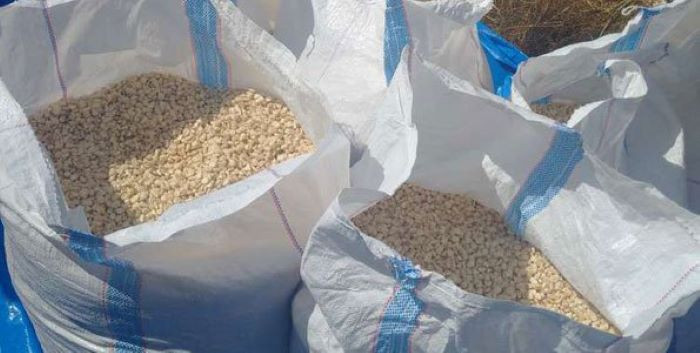
guest column Peter Makwanya
The centrality of carbon in the discourse of climate change is fundamental and indispensable, both as a harmful and productive gas.
The carbon components of moral and religious cluster, dietary, financial and socio-political cluster, play significant roles in climate change mitigation and adaptation programmes.
Despite the negative impacts of climate change, compounded by carbon dioxide as a harmful gas, lexical creativity can divide carbon into a variety of components culminating into a broad network of lexical creativity in order to establish the comprehensive communicative functions of carbon in regulating human behaviour.
The glossary of climate change defines carbon dioxide as, a naturally occurring gas, and also a by-product of burning fossil fuels and biomass, as well as land-use changes and other industrial processes.
According to Henson (2006), carbon dioxide, the chief offender, accounts for about 380 of every million molecules in the air, 380 parts per million. Carbon dioxide is both a pollutant and a natural part of the atmosphere. Carbon dioxide is produced when fossil fuels are burnt, when people and animals breathe and also when plant material decompose.
Carbon dioxide is also described as the foundation stone and driver of life on the planet.
All living things contain carbon, but too much carbon dioxide, as is currently unfolding right now, means that carbon is contributing to the extra warmth, causing global warming all over the world.
- Chamisa under fire over US$120K donation
- Mavhunga puts DeMbare into Chibuku quarterfinals
- Pension funds bet on Cabora Bassa oilfields
- Councils defy govt fire tender directive
Keep Reading
The extra carbon dioxide that humans are adding to the atmosphere from burning fossil fuels (coal, oil, natural gas) is proving too much for the natural carbon cycle to deal with. From the start of the industrial revolution in the 18 to19th centuries, coal and oil began to be used in ever-increasing quantities in order to meet the rising need for energy.
These contributed largely to inherent carbon emissions that have changed the complexion of the atmosphere today.
As such, communicative functions of the term carbon can be established by dividing carbon dioxide into components aimed at regulating human behaviour. Carbon is also a reference gas in which all other gases are measured.
As earlier alluded in the introduction, through lexical creativity, carbon can be divided into moral and religious cluster (carbon sinner, carbon criminal, carbon guilty, carbon footprints), dietary cluster (low — carbon diet, carbon calories, carbon appetite), financial cluster (carbon trading, carbon finance, carbon markets, carbon calculator, carbon trading) and socio-political cluster (carbon war, carbon neutral, carbon sink, carbon capture, carbon absorbers, carbon reporting, carbon drivers, carbon disclosure).
In scientific terms, these carbon clusters are compounds, but in communicative functions, they are metaphors.
A metaphor is about approaching something in terms of someone else. Furthermore, metaphors are generally persuasive in our everyday language and also reflect the way people conceptualize reality. In this regard, through metaphors, people need to be persuaded to desist from behaviours that contribute to environmental damage.
Taking into consideration the moral and religious cluster, carbon footprints can be defined as the total amount of greenhouse emissions resulting directly or indirectly from humans’ lifestyles. Carbon footprints can be measured to establish whether a company or organisation is complying with carbon emission regulations or not. Footprints experts are also able to show where the key carbon hotspots are situated within our products or lifestyles.
Literally, the image of carbon footprints brings out a pair of feet, bare feet being displayed leaving out permanent imprints on the ground. A deeper analysis of the concept of carbon footprints unmasks the issue of exposing careless and destructive images on the land, out of human activities such as deforestation, illegal mining activities, stream bank cultivation, unregulated industrial discharge and waste. This also includes all forms of emissions, pollution and wetland farming.
In this regard, carbon footprints are aimed at correcting or regulating human behavioural tendencies resulting in the discharge of carbon dioxide into the atmosphere.
On carbon sinning, a sinner is somebody who is guilty of an offence, and in this case the offence is environmental in nature. The sinner would have sinned not only to God, but to the environment as well. This becomes a moral and ethical dilemma which needs correction through education, awareness and training of the offenders so that they live sustainable lives which demonstrate environmental stewardship.
On the dietary cluster, low carbon diet emphasises on more people checking on the amount of carbon in the foods they eat. Many food products need to be eco-friendly, they need to be sustainably labelled, quality-controlled and certified by the food standard bodies to establish if they comply with the sustainability requirements. The certification and compliance with the environmentally friendly laws and regulations, would enable people to conform to green buying and living.
Due to the advent of inorganic farming practices, with its genetically modified foods (GMOs), the low carbon diet should indeed be observed.
A critical analysis of the GMOs in terms of the dietary cluster, reveals that issues of carbon disclosure in Zimbabwe and other Sub-Saharan countries are still very much lacking. In this part of the world, people are not very much worried if the food is genetically modified or not, but rather, if the food is available or not.
That is when buying green is sometimes a luxury because the consumers are used to food scarcities, and if they cannot buy what is there, then they starve.
On the financial cluster, carbon marketing/trading, that exceed their emission targets can buy allowances from other polluting nations that are performing better than their intended goals. Such practices are often termed cap and trade because they operate by capping the total emissions from a group of companies and countries (assuming the overall targets will be met) and allow the various participants to trade carbon emissions.
This also include clean development mechanisms for developed countries to get credit for bank rolling projects such as reforestation, wind or solar farms that would reduce emissions in developing countries. A surface analysis would establish that, this idea or system is aimed at promoting a pollution legacy, by over polluting nations to use their financial muscle to buy out other willing participants, especially the poor developing countries.
On the socio-political cluster, carbon reporting, may suffer still birth through under sustainability reporting of emissions. Polluting nations would not disclose their carbon emissions in good faith because of the availability of monitoring and procedural gaps.
Above everything else, these multinational companies are in business to make profits and also in politics to poly-trick stakeholders.











